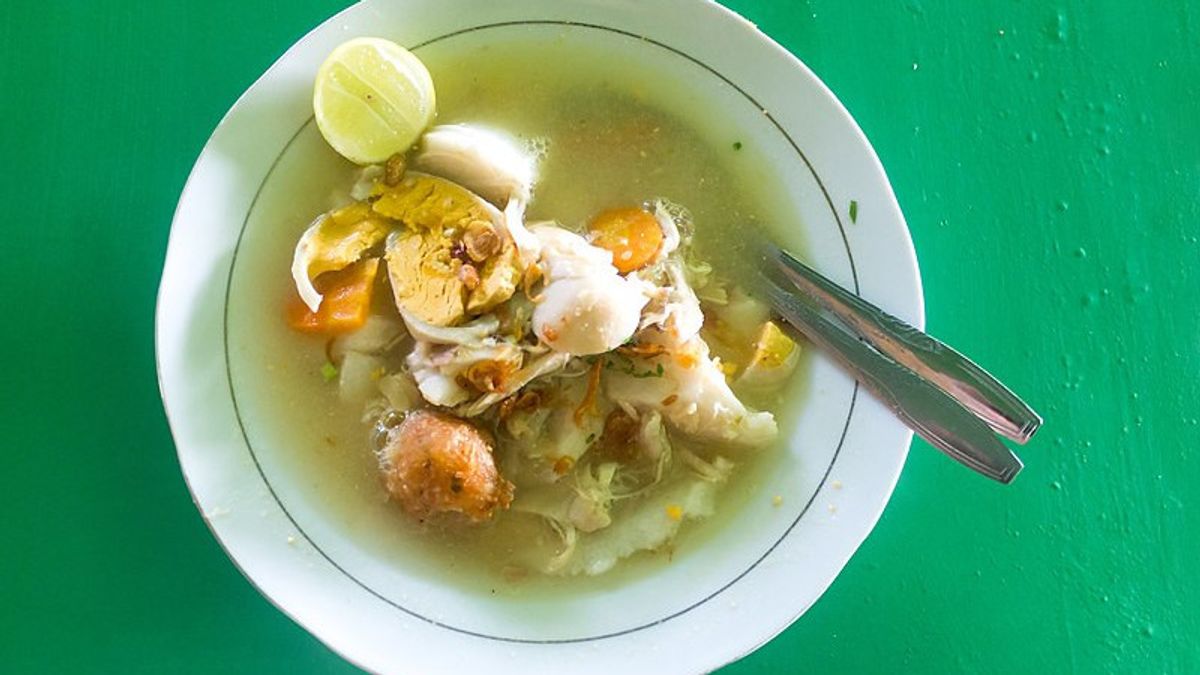JAKARTA - "Why does soto meat in central Java only have four slices of meat? Then eat another side dish in front of it, which costs four times the price of the soto? Sumatrans think I'm slow. We eat a lot of stuffed soto. Period!" The account @lailadimyati chirps and spreads on Twitter into a debate on Javanese and Sumatran food culture. Is this debate worth it? It depends, if then we become aware of the wealth of this nation, then it's worth it.
Serious. We are very rich. Even for soup! Culinary storyteller, Ade Putri Paramadita convinced us of that wealth. Don't go into the soup first. According to Ade, basically Indonesia's culinary wealth is very abundant. Each region has differences, ranging from customs, customs, and culinary culture.
"Let's not talk about soto. Different food, different regions, of course the taste is different. We talk about gudeg in Jogja and gudeg Solo only, the taste character, even though both are sweet, but the intensity is different. So automatically when we talk about food from each region, we can't played. Can't be compared head to head."
"The most famous rendang, for example, is West Sumatran rendang, but the Javanese also make their own rendang, which for sure according to West Sumatran people, 'it's not rendang, it's just kaleyo.' So the interpretation of each region will be different according to general tastes," said Ade to VOI, Wednesday, September 8.
The debate about Javanese-Sumatra food is actually fun as long as it doesn't include SARA sentiments. This debate likes or dislikes to provoke discussion about the culinary wealth of this nation. Okay, now we go to the soup. What is soup?
Rich, even about soupWhy is the meat soto in central Java only 4 slices of meat? Then eat another side dish in front of it that costs 4x the price of the soup? Sumatran people think I'm slow. We ate lots of stuffed soto. Point! pic.twitter.com/8kAnr3GwRZ
— Laila Dimyati (@lailadimyati) September 6, 2021
Culinary storyteller, Ade Putri explained that basically the concept of soto is a soupy dish. There's animal protein in there, a mix of carbohydrates, and vegetables. In addition, given the appetite of Indonesians who often play with texture, "usually there are crackers or crisps. Emping maybe."
And even just from Soto we can see how rich Indonesia's culinary diversity is. Lokadata released a data collection that collected at least 25 types of soto from 22 regions throughout the archipelago. The data also records what spices are used and differentiates them from all types of soto.
From the west end, Aceh, there is Soto Aceh. Shifting to North Sumatra, there is Soto Medan. In Minangkabau there is Soto Padang. Meanwhile, Jambi has soto mackerel. The Bangka Belitung area is famous for its beef soup and Belitung soup. In Lampung, the typical dish of soto is shrimp noodle soup. Meanwhile in Jakarta/Betawi there are Soto Betawi, Jakarta noodles, and Tangkar.
Here's a list of other regions with their types of soto:
1. Sunda Plain:
Soto Bandung Banten Mi Soto Kuning Bogor, Lake intestine.2. Yogyakarta:
Chicken Soto, Clear Lenthok Beef3. Pekalongan:
Soto Pekalongan Grombyang Tegal Tauto Slawi4. Dulangmas:
Soto Sokaraja beef Sokaraja chicken Kedu beef Kedu chicken Sroto Banyumas5. Cirebon
Yellow gravy chicken bongko6. Semarang:
Soto Kudus Kemiri Semarang Bangkong Blora7. Surakarta:
Chicken Soto Soto Ivory Chicken Cauldron Chicken Timlo8. East Java South side:
Soto Kediri Beef Trenggalek Chicken Trenggalek Rujak Chicken typical Blitar Chicken Lombok Kediri Magetan Kambing Ngelo9. North Coast of East Java:
Soto ambengan Madura beef Madura chicken Lamongan Kikil Kediri Duck Surabaya Eldest Walnut10. Minahasa:
Coconut milk chicken soup11. Dayak:
Soto Mahakam12. Banjar:
Soto Banjar13. Bugis:
Coto Makassar14. Madura and Osing:
Soto Pamekasan Soto Madura Chicken Tripe Meat Sumenep15. Sasak:
Soto ribs Lombok Chicken Jackfruit Between Java and SumatraAs said by culinary storyteller, Ade Putri, differences in food culture between regions should be seen as wealth. There are a number of factors that influence the distinctiveness of a food culture. One of them is the spice trail. This also applies in the Java-Sumatra context.
"Who finally settled in the Sumatra area when the trade took place? Most of the people in Sumatra were said to be Indians and Arabs," said Ade to VOI, Wednesday, September 8.
That is what causes the character of Sumatran food to be attached to Arabic and Indian cuisine, which relies heavily on spices. And in Java, in fact, the Javanese food narrative is more 'minimal', which is why it is not appropriate. The principle difference is in the character of the taste.
If Sumatra is more spiced, Java relies more on spices. "And maybe some people talk about it as a taste that tends to be sweet. For example, if we talk about history, again in the past, who lived in Java more: Dutch colonialism."
*Read other information about CULINARY or read other interesting writings from Yudhistira Mahabharata.
Other BERNASThe English, Chinese, Japanese, Arabic, and French versions are automatically generated by the AI. So there may still be inaccuracies in translating, please always see Indonesian as our main language. (system supported by DigitalSiber.id)









